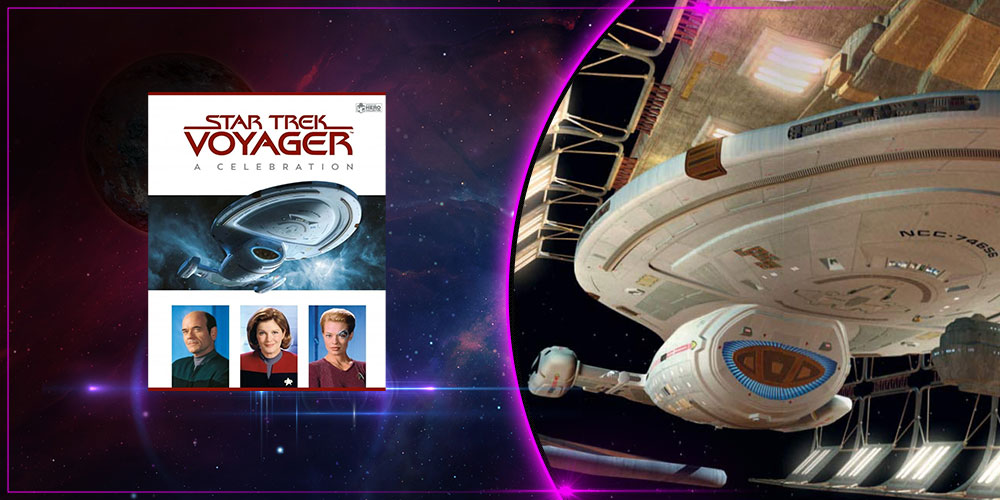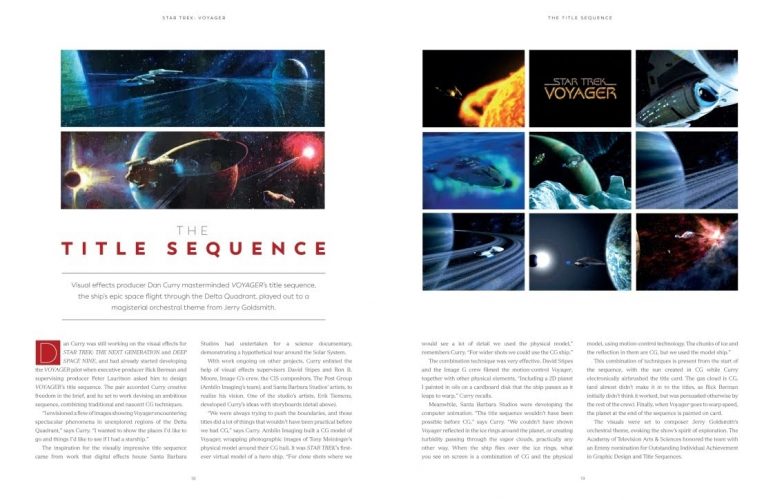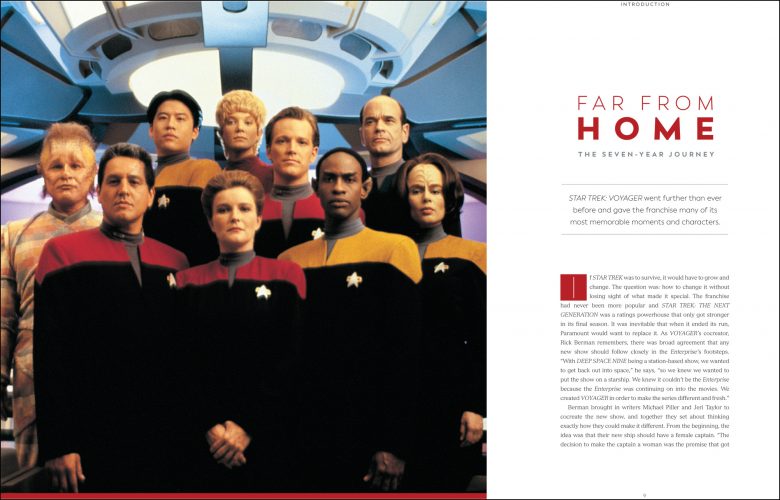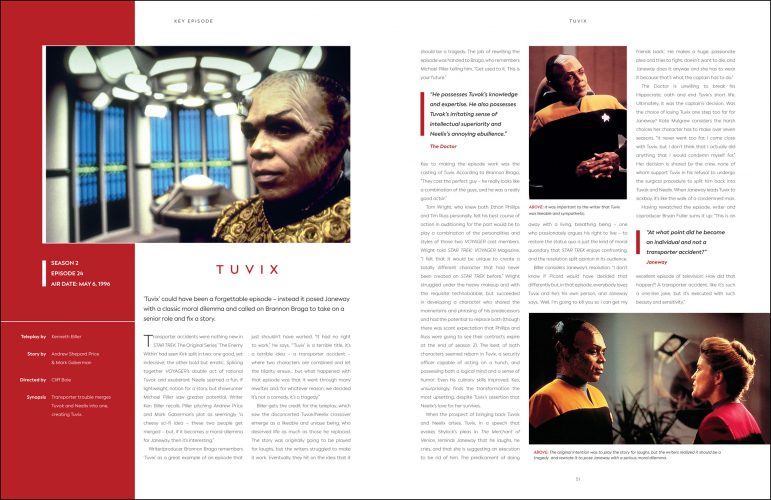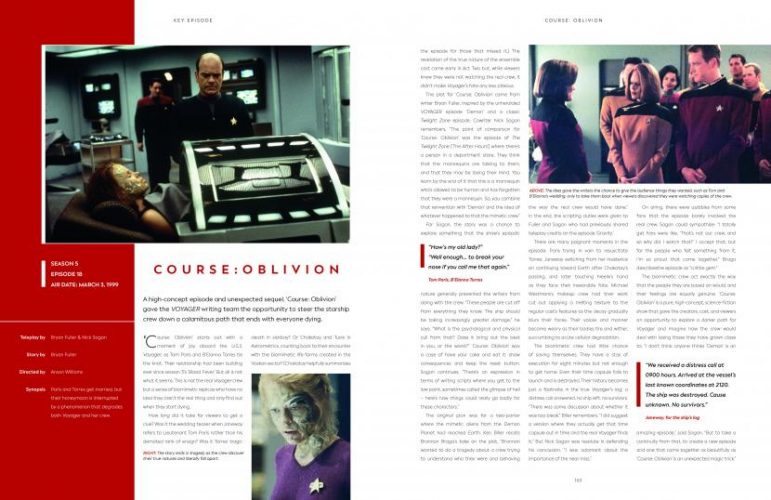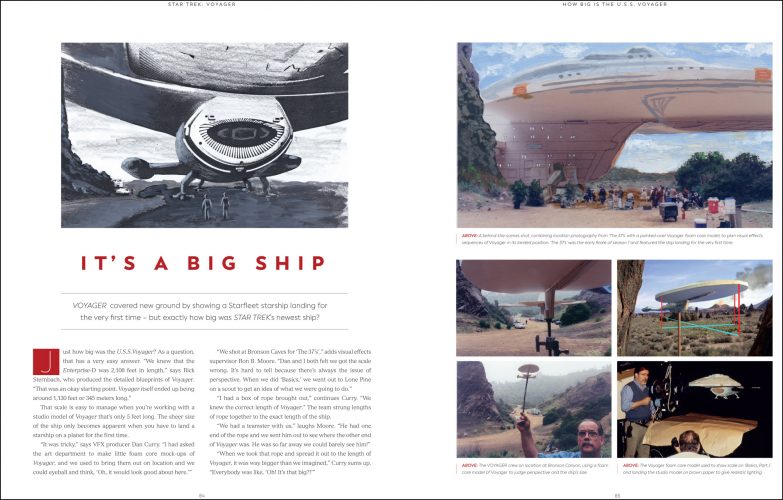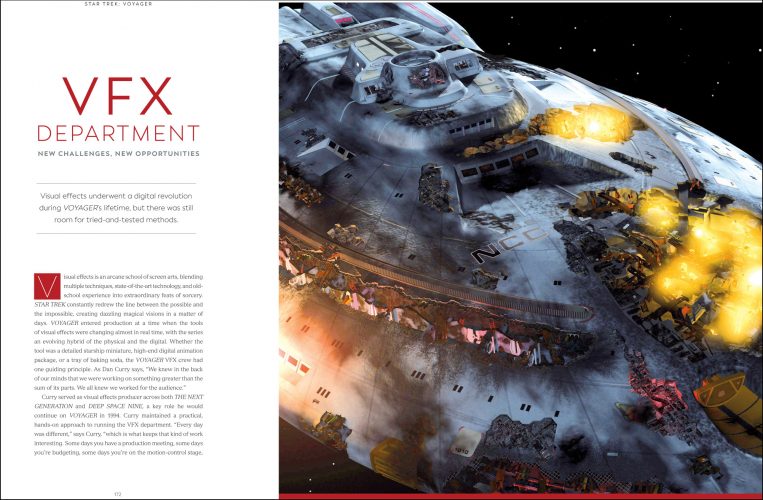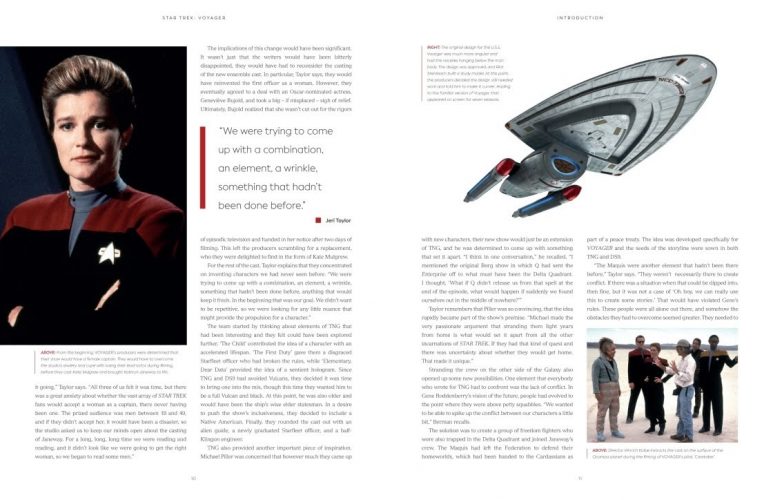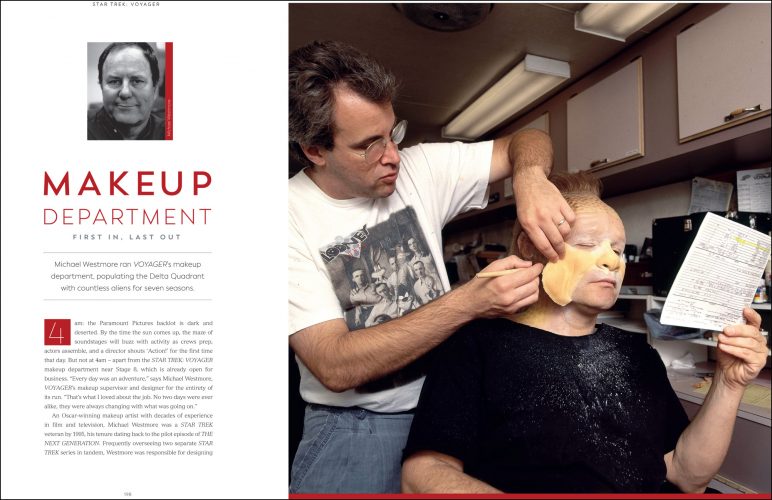With a show like Voyager, a series depicting an area of space not seen before in the Star Trek universe, there was scope to come up with whole new worlds, stories and characters. Almost a new galaxy to explore, and with that, there has to be a lot of behind the scenes information and stories. And that’s what this book looks at, the development behind the show and how characters were born either by the writers or the actors themselves.
Let’s start with the book’s layout. There are over 50 chapters in the book spanning a total of 246 pages. Each chapter can vary in length from a 2-7 page spread on average, with 10 chapters dedicated to the main cast, then chapters dedicated to specific cult favourite episodes such as “Tuvix”, “Caretaker,” “Year of Hell,” and “Course: Oblivion.” And sprinkled between these chapters are ones of new races such as the Kazon and Hirogen as well as the technical aspects like the VFX, costume, and ship design, with the final seven chapters covering each season of the show. This breaks up the book nicely as it’s not all just one long read about the technical information, then characters, then races, for example, instead of changing the subject just slightly to keep things interesting.
During the main cast episodes, we get insight into the thought process behind each character as well as input from the actors and actresses playing said roles. With snippets of interviews from Kate Mulgrew, Jeri Ryan, Robert Beltran, Tim Russ, Robbie McNeil, Roxann Dawson, Garrett Wang, Ethan Phillips, Jennifer Lien and finally Robert Picardo, as well as a look into how Brannon Braga and the writing team came about to make such amazing characters. It’s definitely interesting to read about how Robert Beltran aided in the moulding of Chakotay, how Janeway was originally going to be played by someone else before Mulgrew, and how Roxann Dawson researched the Klingon Empire in preparation for her most unique portrayal of the famous honour-based society. We also learn about the development of Harry Kim from a cadet fresh from the Academy to a fine, experienced officer with his own command of a somewhat unique vessel.
The Chapters of the VFX are most intriguing, diving into how they went about making such stunning CGI and even down to the way they arranged the effects of the ship having touched down on a planet! From measuring the length of the ship on location with a bit of rope to having small basic foam shapes to line up a good looking shot. Later chapters also go into the details about the use of both CGI and practical models to film the basic passing shots, but also the more complex shots like Voyager crashing into another vessel.
The key episode segments are also of interest, going into the process of how each episode came to be in the writing room and the excitement brought on by guest stars. We hear from the writers themselves as they talk about how an idea can be shaped from a basic premise to what we see on screen, and often is the case where it is widely different to the first draft. These are complemented by chapters that involve some amazing concept art, especially some very different looking designs for the Voyager and the Delta Flyer.
Finally, we have the new species chapters. These are some of the most fascinating stories in the book, describing such races as the Vidiians, who were slated to appear on another Star Trek series. Another interesting nugget was how the idea came about for the new races to “have legs,” tidbits of back story sprinkled into the plots of various episodes used not only to flesh out the Vidiians but also the Kazon, the Hirogen, and even the dreaded Borg. There’s also a great story all about how Species 8472 came to life via a daring new use of CGI in Star Trek.
Overall, if I haven’t said this enough already, this book is highly interesting to dive deep into the processes of making Star Trek: Voyager. And I would definitely recommend it if this is your thing. However. It is also information overload, this book is crammed full of information with two columns per page and it can be a lot to take in.

